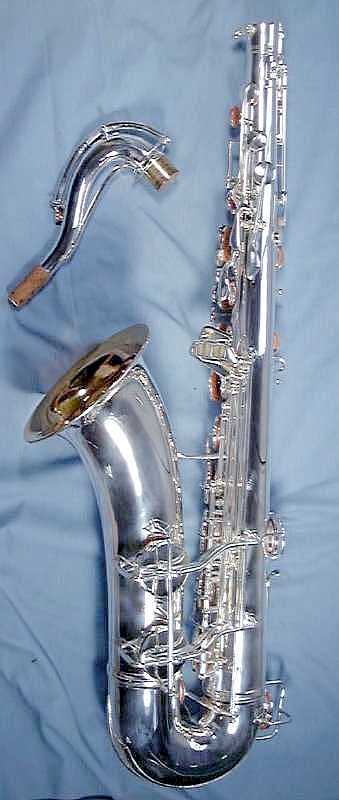
Date: 1946. Image by VintageSax
Instruments built up to 1948 have rolled tone holes, those built 1948 don't have rolled tone holes. These instruments are sometimes called "Naked Lady" models or "M" models. The "Naked Lady" refers to the engraving often seen on the bell. There is a misconception that the presence of the Naked Lady engraving and how much of the Lady is visible is an indication of the quality of the individual instrument. Noted Conn researcher Dr. Margaret Downie-Banks says that there is no truth to this.
The issue of mouthpiece selection for the 10M in relation to intonation often comes up in various forums. The consensus appears to be that the 10M is quite mouthpiece sensitive and works best with a mouthpiece that has a large, round chamber. This is in accordance with the type of mouthpiece most in use at the time.
In the following video Matt Stohrer gives an in depth overview of the mechanics of the 10M "Standard" Tenor Saxophone: Repairman's Overview: Conn 10M Tenor Saxophone.
What Conn said in 1939:
Whether you are interested in the alto, tenor or baritone, when you buy Conn you can be sure of getting such
important and exclusive improvements as Hydraulic Expansion; drawn-rolled tone hole sockets, that
will not leak or cut the pads; adjustable pivot screws, that will give light, positive action and will not
vibrate out of adjustment; Red-O-Pads, that will increase resonance and add brilliance to your tone; new, hard
keys, that give that confident "feel" when you touch them; reserve power - that extra "sock" and "kick"
produced without straining; new design octave socket, that helps "buzzy A" and gives quick response and brilliance
to upper register; raised high E key; and others. On the alto and tenor you have also the C-D trill, G# trill,
new table keys - all three patented and exclusive on Conns. On the alto you have tuning device and bottom mouthpipe
key - two more patented and exclusive features. Steelay mouthpiece standard.